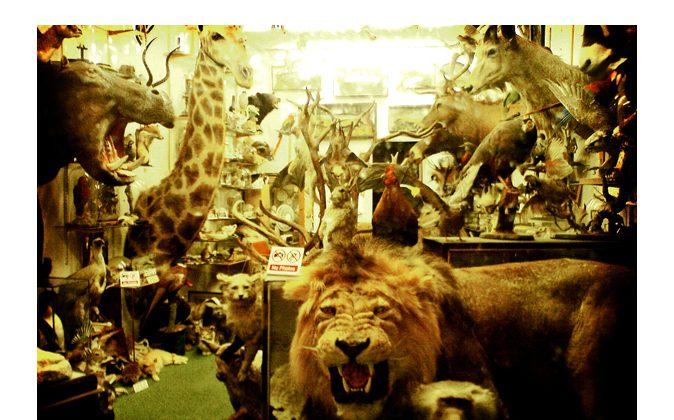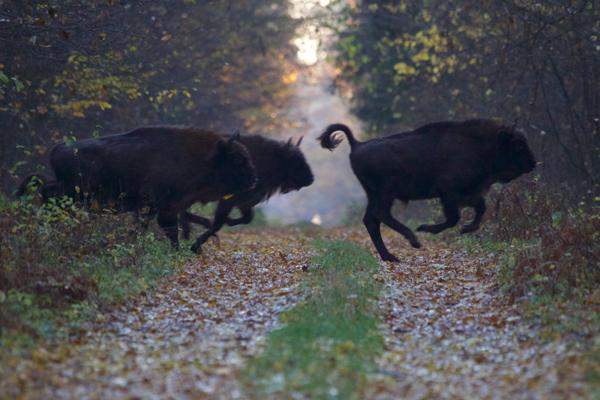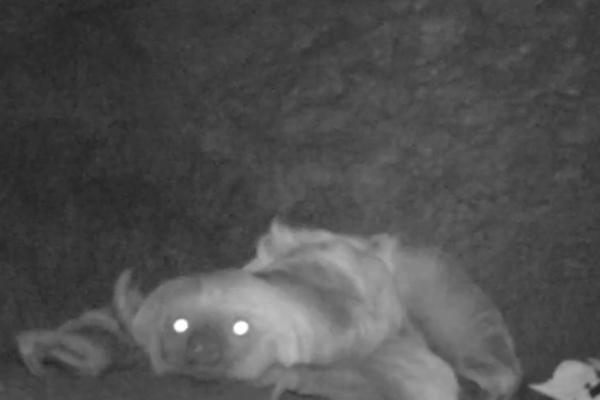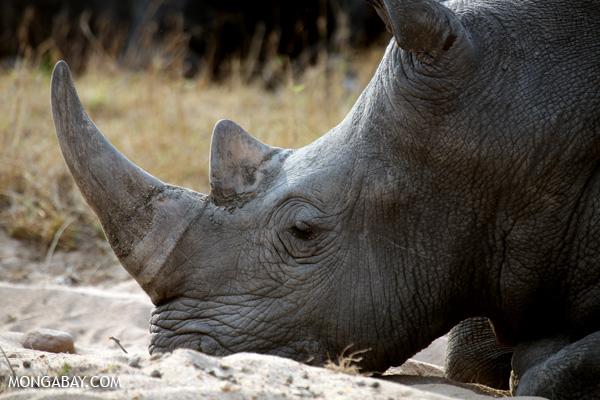The comic dodo, the stately great auk, the passenger pigeon blotting out the skies, the giant moas reigning over New Zealand: human kind has wiped out nearly 200 species of birds in the last five hundred years. Birds we‘ll never get back. Now, if we don’t act soon we’ll add many new ones to the list: birds such as the giant ibis, the plains-wanderer, and the crow honeyeater. And these are just a few of the avians that appear today on the long-awaited EDGE list of the world’s 100 strangest and most endangered birds.
“The release of the EDGE Birds list enables us to prioritize our conservation efforts in the face of a mounting list of endangered species,” said Carly Waterman, EDGE Programme Manager. “These one-of-a-kind birds illustrate the incredible diversity that exists in our natural world.”
Conservation by science
Run by the Zoological Society of London, the highly-innovative EDGE program (which stands for Evolutionary Distinct and Globally Endangered) does conservation differently. Instead of focusing on so-called charismatic and well-known species, the EDGE program chooses its focal species based on two scientific data points: evolutionary distinctness and the risk of extinction according to the IUCN Red List. In other words, instead of making conservation a popularity contest, EDGE employs science to determine where limited conservation resources should be focused first.
“Many of the species we’re highlighting are less familiar and are receiving less conservation attention than typical bird conservation priorities,” Waterman told mongabay.com. In fact, about half of the birds on the list have seen little to no attention by conservationists. Like many other species worldwide, birds have been decimated by habitat loss and deforestation, overhunting and overfishing, pollution, and invasive species, while climate change remains a rising threat to the avian family.
The new list is based on years of research by evolutionary biologists, headed by Walter Jetz with Yale University. Jetz and his team created a massive family tree for birds in 2012 and today released a new study in Current Biology outlining evolutionary distinctness within the family. Evolutionary distinctness refers to how far apart an animal lies on the family tree from its relatives, allowing scientists to see which bird species are arguably the more irreplaceable in evolutionary terms.
“To date, conservation has emphasized the number of species, treating all species as equal,” said Jetz. “But not all species are equal in their genetic or geographic rarity.”
The research went further than past studies of evolutionary distinctness by also mapping the geographic ranges of the world’s birds, allowing conservationists another way to look at how imperiled species may be. Employing the website, Map of Life, the researchers have also mapped the birds’ ranges for the public.
According to the new study, the most distinct bird on the planet is the oilbird (Steatornis caripensis). Separated from all other living birds by 80 million years, this South American bird is the only nocturnal, flying, fruit-eating bird on the planet.
“Oilbirds roost and breed in colonies in caves during the day and leave at night to fly to fruiting trees. They can navigate in the dark using echolocation and use smell to locate fruit,” explained Waterman.
The common name ‘oilbird’ comes from the fact that people used to boil baby oilbirds—which are fat and oily—for their oil. However, it’s not on the new EDGE list, because, despite being used as an oil source, it’s not currently endangered.
Meet the EDGE birds
But the new EDGE Birds list—following similar lists for mammals in 2007, amphibians in 2008, and corals in 2011—includes a number of birds just as fascinating as the oilbird. For example there’s the top bird on the list: the giant ibis (Thaumatibis gigantea). Standing up to a meter in height, this strange cryptic bird forages amon Southeast Asia’s rapidly vanishing wetlands and forests.
“It is highly evolutionarily distinct—the only representative of the genus Thaumatibis, which diverged from the rest of the ibises and spoonbills around 50 million years ago,” Waterman said, adding that “only approximately 230 pairs are estimated to survive in northern Cambodia and extreme southern Laos.”
There is also number 34: the little dodo, or tooth-billed pigeon (Didunculus strigirostris), which is one of the world’s closest living relatives to the extinct, and much more famous, dodo. Found on the island of Samoa, this strange, prehistoric-looking bird is also perilously close to extinction.
“There may be fewer than 250 individuals left, although nobody really knows much about them at all,” said Waterman. “We need to determine their conservation status through surveys and potentially use Mataki tracking devices to find out more about their movements and behaviour so that we can better target conservation actions.”
Some of the motley crew of 100 avians are already well-known to the global public—like number three, the California condor (Gymnogyps californianus)—while others are barely known—such as number 58, the Uluguru bush-shrike (Malaconotus alius) which is found on a single mountain range in Tanzania.
Of the 100 birds, 12 may already be extinct, says Waterman. This includes number two on the list, the New Caledonian owlet-nightjar (Aegotheles savesi).
“It was first discovered after a bird flew into someone’s bedroom in 1880,” she said. “The species was not seen again for over 100 years until its rediscovery in 1998. Sadly it hasn’t been seen since, and it’s possible that it is now extinct.”
And even these examples barely scratch the surface of the fascinating creatures on the EDGE list. There is number four: the adorable, plump, fruit-eating, flightless kakapo (Strigops habroptilus), famous for attempting to mate with zoologist Mark Carwardine’s head during a wildlife documentary. Then there is number eight: the Philippine eagle, one of the biggest raptors on the planet, that preys on everything from monkeys to monitors. In fact, the Philippines is home to six EDGE birds. This isn’t a coincidence.
“Half of the top 100 EDGE birds occur in the Asia-Pacific region, and about two-thirds of those are island species,” Waterman explained. “This is partly because a large number of ancient evolutionary lineages are represented in this region, but also because it has been the focus of massive human impacts to the environment. Many of the Asia-Pacific island species are ground-dwelling and hence are particularly susceptible to hunting and introduced mammalian predators such as rats and cats, which predate eggs and chicks...Mainland Southeast Asia in particular is an urgent priority for conservation because of its massive human population and associated impacts on biodiversity.”
Jetz says that the list also points conservationists to long-neglected parts of the world.
“These highly distinct and endangered birds often occur far away from places that are species-rich or are already on conservation’s radar,” he noted. “By identifying these top 100 species, we can now focus our efforts on targeted conservation action and better monitoring to help ensure that they are still here for future generations to come.”
Conservation on the ground and in the air
Not all the birds are found on land. For example, number 90, Beck’s petrel (Pseudobulweria becki) is one of nine seabirds on the list. Of all the bird families, seabirds are the most imperiled. Beck’s petrel was only rediscovered seven years ago and has yet to be targeted by any conservation program. Waterman says that the 50 or so birds on list, like Beck’s petrel, that have received little to no attention “are the immediate conservation priorities.”
“We aim to initiate conservation action for all of them—this may be through an expedition to find out the status of a poorly-known or possibly extinct species, through setting up a new ZSL project where we have a presence in-country, or through supporting local conservationists,” Waterman told mongabay.com.
For example, this year the EDGE program is working to support a community reforestation project in the Philippines to help a number of EDGE species, including the Philippine eagle.
“Each pair needs to maintain a territory of 25-50 square miles of forest in order to successfully feed and rear their chick, but much of the forest outside of protected areas has been converted to agriculture or has been destroyed by extreme weather events such as last year’s Typhoon Haiyan,” explained Waterman. “We urgently need to locate key sites for the eagle, and protect and restore the surrounding forest.”
EDGE also plans to train and support young, local conservationists who want to work with EDGE Birds through its Fellowship program.
“We’re also announcing a call for Fellowship applications focusing on poorly-known birds from the top 100,” explained Waterman. “EDGE Fellowships provide funding, training and support over a two-year period for in-country conservationists to set up a project focusing on EDGE species.”
Birds have been around some 160 million years—or 800 times longer than Homo sapiens. They survived the comet that killed off their direct ancestors, the dinosaurs, and a series of ice ages. With nearly 10,000 species today—including a few new species discovered every year—they are the most diverse of the tetrapods (four-legged vertebrates), which includes mammals, amphibians, and reptiles. Birds play major roles in many ecosystems, including seed dispersers, rodent control, and prey for other species. But the ongoing biodiversity crisis could leave many of our most remarkable feathery friends gone for good.
Citations:
- Jetz, W., G. H. Thomas, J. B. Joy, K. Hartmann, D. Redding, and A. O. Mooers. 2014. Distribution and conservation of global evolutionary distinctness in birds. Current Biology 24, 1–12, May 5, 2014 http://dx.doi.org/10.1016/j.cub.2014.03.011
This article was originally posted by Jeremy Hance, a contributing writer for news.mongabay.com. Please visit their website for the original story and more information.
.Kakapo-1_SHANE-MCINNES-(1).600_mongbay-(1).com-(1).jpg&w=1200&q=75)




Friends Read Free